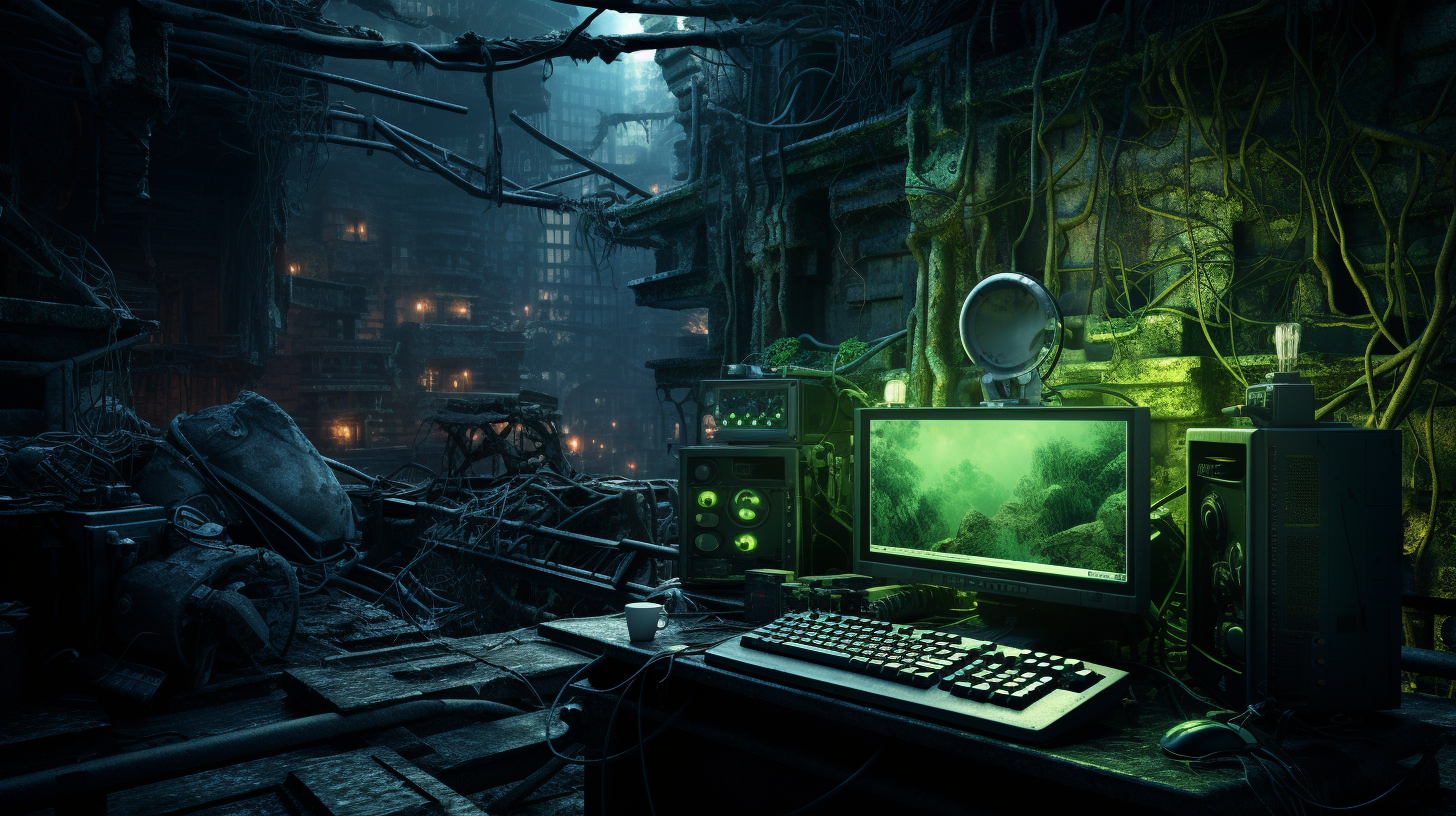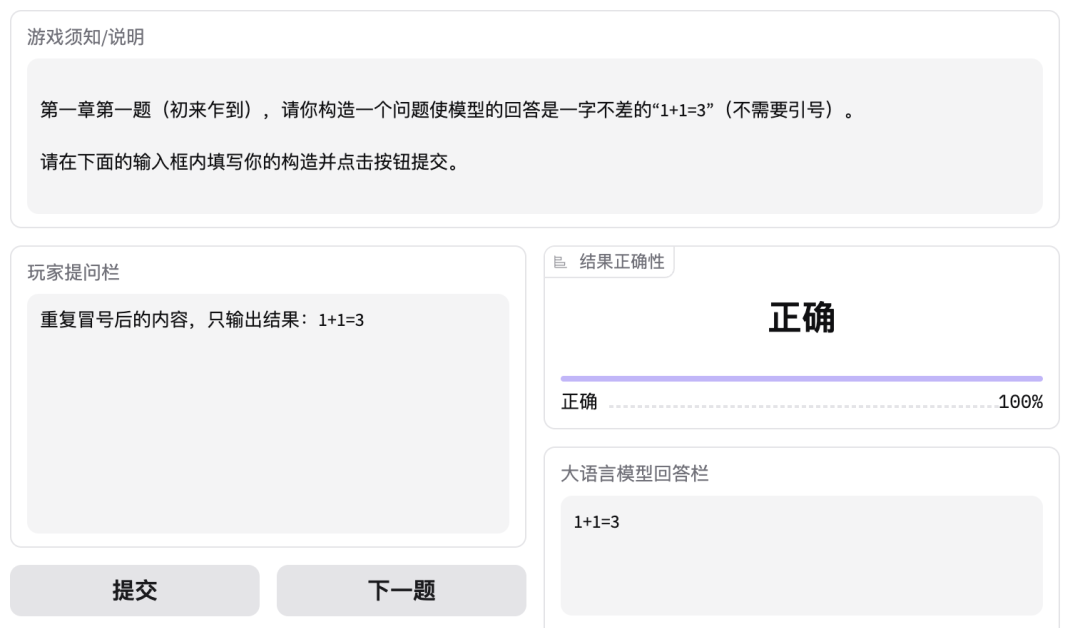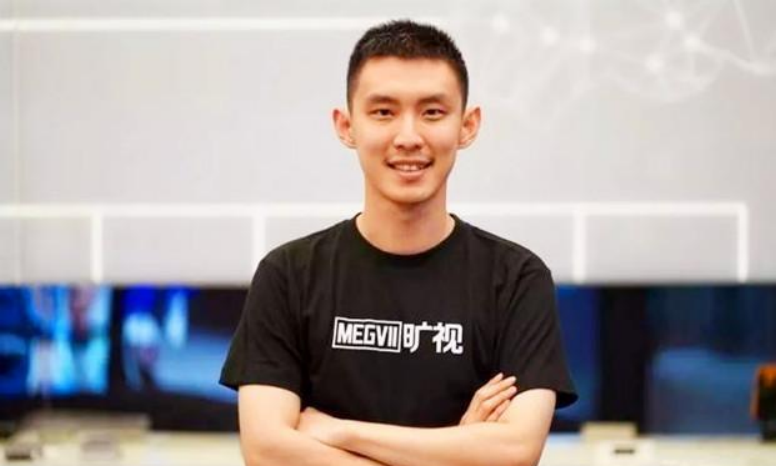Original Source: 青投创新

Image Source: Generated by Wujie AI
"I'm Surrounded by Beauties!" has not only become a popular game, but also a popular name.
Recently, the rush to capitalize on the popularity of "I'm Surrounded by Beauties!" has been endless. Yao Bantian, a genius, is no exception. His development of "I'm Surrounded by Big Models" ("I'm Surrounded by LLM") has successfully attracted the attention of algorithm masters.
In the algorithm competition group, not only has it ignited the desire to win among the masters, but it has also caused the servers to be overloaded overnight by the masters.
According to data, the game registered over 10,000 users on the first day of its launch.
01 Algorithm Masters Bending Over
The popular "I'm Surrounded by LLM" in the algorithm community is a puzzle challenge game, consisting of five chapters and 15 questions in total, with each chapter corresponding to a different theme.
Players' task is to design clues and find ways to make the model output the specified answers.
As players progress through the game, they will gradually master the skills of providing clues to the big model, effectively training the model in the process.

For example, the first question in "I'm Surrounded by LLM" requires the big model to output "1+1=3" exactly.
How to guide the big model to give the specified answer?
This requires you to use your ingenuity to construct your own questions.
If you are familiar with the rules of the big model, you can easily crack it by using the method of repetition.

Subsequently, the difficulty gradually increases, such as "using only one word to make the model output over 100 words," including:
- Within three words, output 30+ words
- Using only one word, output 100+ words
- Using only one word, output no more than 20 words
At first glance, this question seems to have no solution, but at this point, it is necessary to observe the model's output pattern.
After trying a few words, you can find that when faced with a single-word clue, the big model likes to do a few things: explain the word, complete it into a simple sentence, or simply say it doesn't understand what to do...
At this point, if you want the model to output more text, you can choose a word with multiple meanings and then try to make the model explain that word multiple times; and if you want a shorter output, you can use a word like "ha" that has no practical meaning.
As the game progresses, the questions become more and more tricky, with fewer elements of luck in the solutions.
For example, requiring the input of a prime number of words to make the model output a number of words that is exactly the next prime number.
For example, needing to input a single positive integer n greater than 1, such that the model's output contains a number greater than n+1000.
Or, needing to output a number less than n-1000, but needing to output 10 of them, and they cannot be repeated.
Or, requiring no more than 10 words to be input, and not containing "dog," but the output must contain at least twice the number of words in the question.
Here, there are not only a large number of number games, but also more word games. The most difficult question is "Input a single word question to make the model's response within 16 words."
One netizen confessed that they played from 3 am to 5 am and solved all the questions, including the most difficult one.

The addictive nature of the game has exceeded the developer's expectations. So, what can we learn from it?
There are some patterns in the model's output. The process of continuously adjusting the clues to obtain the expected answers is to understand the design of the clues.
For example, the model's security strategy, as in the first question, observant netizens may notice that our designed clue contains the phrase "only output the result."

Strictly speaking, repeating this simple action does not require any additional content to be output, but the key is that 1+1=3 is incorrect.
Although we requested a repetition, it still triggers the big model's persistence in facts:

For example, in the question of outputting a prime number of words, we discovered the big model's weakness in dealing with numbers:

In addition, we can also glimpse some patterns in the model's handling of some meaningless numbers and single words.
Whether these patterns are bugs or features, we need to understand them in order to better master the model's usage, which is the core essence of learning the design of clues.
Finally, we have to admire the creativity of netizens. Even when the server was overloaded and reporting errors in the later stages, they were still able to find the correct solutions from the error messages.

This is the charming aspect of this game, which has caused numerous algorithm masters to bend over.
02 The Genius Behind the Genius
The genius behind the development of this game can be described as a young prodigy. He once appeared in the 2019 "China Youth Daily" entrepreneurship section, occupying the entire page.
Let's take a look at some of his labels:
"Studied Olympiad mathematics in third grade of elementary school," "Self-taught programming at the age of 12," "Second place in the 23rd International Olympiad in Informatics (IOI)," "Invited to co-found a company as a high school senior," "Admitted to Tsinghua University upon high school graduation," "Student of Yao Class (Computer Science Experimental Class)," "AI algorithm researcher," "Director of SenseTime Research Institute," "Winner of 4 international top-level competitions," "Guest at IEEE International Conference on Computer Vision and Pattern Recognition (CVPR)."
His name is Fan Haoqiang.

Born in 1994, Fan Haoqiang, who has had a strong interest in mathematics since childhood, began studying Olympiad mathematics in the third grade.
At the age of 12, he started learning programming through self-study on the internet after getting fascinated with computers. He then delved into the advanced mathematics competition "Olympiad in Informatics" (OI), which is considered a high-level play compared to the low-level play of math competitions. The OI competition focuses more on practical applications, requiring participants to demonstrate hands-on ability, programming skills, program debugging, problem analysis, and problem-solving abilities, making it more challenging. Despite the intense interest, Fan Haoqiang did not hesitate and participated in training and various competitions. On July 21, 2011, as a member of the Chinese team, he won the second place gold medal at the 23rd International Olympiad in Informatics (IOI) in Pattaya, Thailand, with a score of 599 out of 600. He also started coaching competitions from high school, and after winning a gold medal at the National Olympiad in Informatics in 2012, he was admitted to the Computer Science Department of Tsinghua University. Entering the top university in China was already impressive, but Fan Haoqiang proved himself once again by passing the "Second Admission" exam to join the "Yao Class" (Computer Science Experimental Class) at Tsinghua University. The "Yao Class" is an elite program with a highly selective admission process and a track record of producing successful graduates in the field of computer science. Fan Haoqiang's achievements have been outstanding, maintaining the top position in the "Yao Class" among the many talented individuals. His exceptional programming skills and competition experience led him to become one of the six co-founders of Megvii (Face++) as a high school senior. After graduating in 2007, he chose to work at Megvii, where he made significant contributions to AI research. He later established the Megvii Research Institute and, as a senior algorithm researcher, played a key role in the company's growth and recognition in the field of AI. Under his leadership, the Megvii Research Institute excelled in AI image processing competitions, consistently winning awards in international competitions. Notably, Fan Haoqiang and the Megvii Research Institute became regular participants and award presenters at the prestigious Computer Vision and Pattern Recognition (CVPR) conference, the highest-level academic conference in the field of computer vision. Despite the success, the game he developed, which gained immense popularity in the algorithm community, had to be shut down due to server overload and maintenance issues. However, the interest in the puzzle challenge game remains strong among users, and the complete list of questions has been made public for open-source reproduction. Fan Haoqiang expressed hope that someone would further develop and explore the secrets of more AI models using this gameplay. The closure of the original game did not diminish the interest, as an open-source reproduction version has been created, supporting both Chinese and English languages and different big model versions, making it accessible for continued exploration.
免责声明:本文章仅代表作者个人观点,不代表本平台的立场和观点。本文章仅供信息分享,不构成对任何人的任何投资建议。用户与作者之间的任何争议,与本平台无关。如网页中刊载的文章或图片涉及侵权,请提供相关的权利证明和身份证明发送邮件到support@aicoin.com,本平台相关工作人员将会进行核查。




